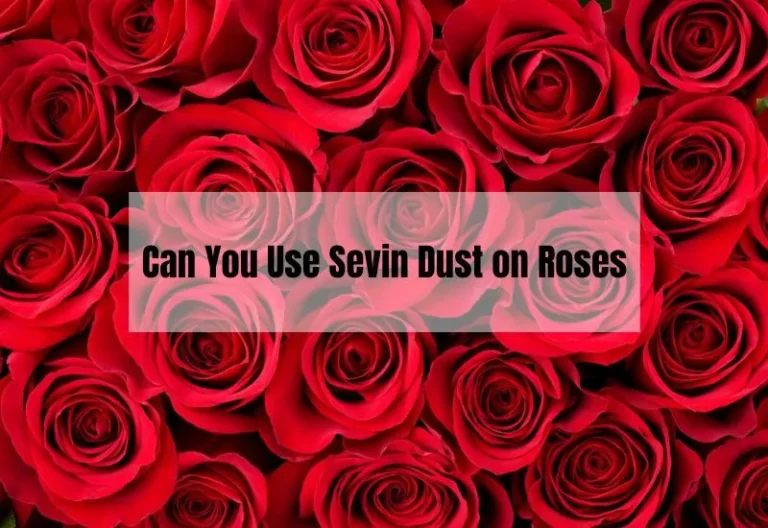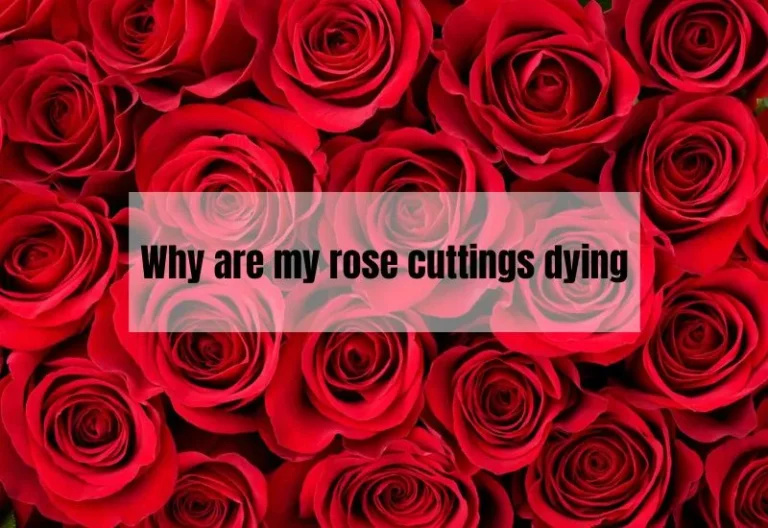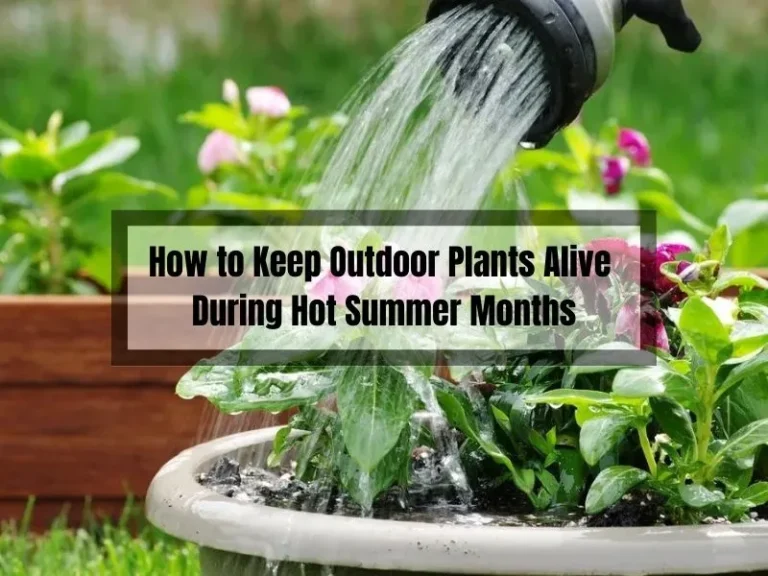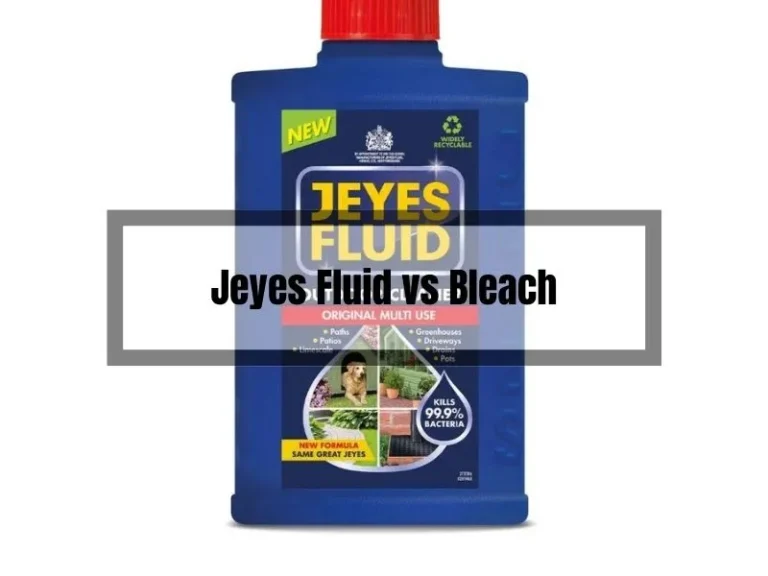Baby Tears 101: How to Grow & Care Baby’s Tears
Looking for a gift for a gardening enthusiast or a low-maintenance plant to start your own garden? Consider Baby’s Tears.
This plant is perfect for busy schedules, requiring minimal care. It boasts beautiful yellow-green leaves, appearing delicate but sturdy. An easy indoor houseplant, it can enhance your home or porch when hung in a basket.
Let’s explore Baby’s Tears, including care tips, even for hectic schedules.
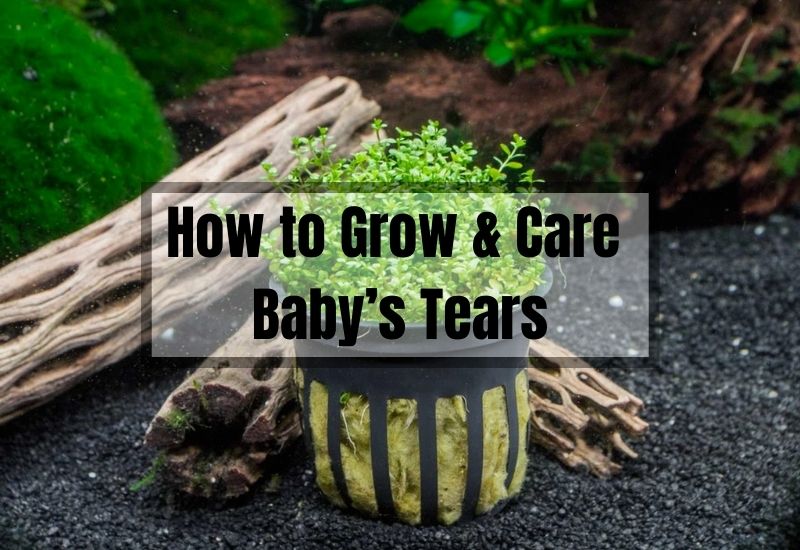
About Baby’s Tears
Baby’s tears, scientifically known as Soleirolia soleirolii or Helxine, are part of the Urticaceae family, also known as the nettle family. They originate from Corsica and Sardinia, two western Mediterranean islands. Joseph Soleirol introduced these elegant plants to France.
In the 1830s, Charles Gaudichaud-Beaupré named the genus after Joseph Soleirol as a sign of respect. Later on, Esprit Réquien classified the plants as Helxine. Nowadays, Baby’s tears can be found all over the world.
These beautiful plants are evergreen, mat-forming perennials with tiny, tear drop-like leaves that creep along the ground. They thrive in indirect sunlight, such as under windows or on patios, and in shady areas. Although they resemble moss, they are not a type of moss.
Baby’s tears have many nicknames, including angel’s tears, bits and pieces, bread and cheese, Corsican creeper, Corsican curse, friendship plant, helxine, mind-your-own-business, mother of thousands, paddy’s wig, pollyanna vine, and even Irish moss, although they are not actually moss. Despite the variety of names, all refer to the same beautiful plant.
Baby’s tears have different color variants, although not as many as their nicknames. For example, the leaves of the Aurea variety are golden-green, while the Variegata variety has silvery-green foliage.
One of the best things about Baby’s tears is that they are safe for humans and pets. The American Society for the Prevention of Cruelty to Animals considers them non-toxic, so you can even place them in your child’s room without any worries.
Features and Characteristics of Baby’s Tears

Baby’s tears are a type of perennial plant that can remain with you for many years. They are popular as an ornamental plant due to their attractive green foliage. These plants are low-growing, reaching heights of only 5-10cm and covering an area of 30-46cm.
In the wild, baby’s tears grow best under dappled light and can be found in shaded banks, damp paths, roadside walls, gardens, and churchyards. However, they are sensitive to frost and require moist, cozy spaces. These plants thrive when in contact with soil.
Unlike other vines, baby’s tears do not grow very long. Instead, they take on the shape of the object they are covering, whether it be a rock or wooden log, making them ideal for landscaping.
There are different types of baby’s tears available, including Aurea, which has wide, golden leaves, and Variegata, which is famous for its exotic evergreen foliage. Dwarf baby tears have roundish ovoid shape leaves that wrap around thin delicate stems, forming a mat or carpet growth. These plants are the smallest aquarium plant, forming amazing oxygen bubbles at the top.
Baby’s tears do flower in late spring with tiny, star-like white flowers lacking petals. However, they are not as attractive as their adorable leaves. They are easy to take care of and are perfect for newbie gardeners. They grow up to 3 feet if not groomed and can be grown both indoors and outdoors, making them ideal for terrariums or hanging baskets.
Due to their vigorous growth and invasive nature, baby’s tears are best grown in containers. They can be grown alongside other houseplants, including African Violet, Miniature Orchid, Streptocarpus, Ferns, Astilbe, and Dicentra.
However, these plants can be susceptible to attacks from scale and aphids. It is easy to confuse baby’s tears with other plants, such as Pilea or Irish moss, due to their similarities. Pilea depressa, also known as Pilea ‘Baby’s tear’, has smaller round leaves and is a cousin of baby’s tears native to Mexico and Brazil.
In summary, baby’s tears are an attractive, easy-to-grow plant that can be used for landscaping or as an indoor plant. They are best grown in containers due to their invasive nature and can be susceptible to attacks from scale and aphids.
How to grow Baby’s tears
Potting mix
They love well-draining, aerated soil mix with demand of peat moss in it. If your soil is drying out and fail to retains water. Then add in perlite or vermiculite and peat moss. Peat moss will help to keep soil moist the way our Baby’s tears love. The perlite will help in draining process.
You can also add humus or compost. This will increase the organic matter in the soil. It will fulfill the criteria of well aeration. This will allow our Baby’s tears roots to breathe. pH of the medium should be acidic. pH around 5-6 is perfect.
Watering
They hate soggy soil. They love to sit in moist soil. They hate when you do overwatering. Overwatering and underwatering both harm our Baby’s tears. If you under-water it leads to crispy leaves and growth will stop. If you over-water it will lead to rotten roots and lower leaves will turn yellow. Overwatering makes soil soggy which restricts their breathing.
Rainwater or distilled water is best. If you are using tap water use Luke warm water. Use room temperature water. If the water is cold then let it sit for a while. As it reaches room temperature use it for watering. Cold water might shock them.
Whether it is summer or winter your soil should be moist. In winter season the need of water is less. Hence do watering according to the need.
You can use bottom-up method for watering.
First, check the soil if it is dry or moist. Push your finger in soil up to the second knuckle. If you feel it is dry then water the plant. Fill the water halfway of the pot and place it in a container containing water. Let it sit for 10 min. If the soil is still dry then leave it for 20 min. The process helps to grow strong roots as they grow in direction of high moisture.
Light
They love to experience bright indirect sunlight. You can keep in the gallery or backyard where you sit and read newspaper facing back to the light source.
Keep our Baby’s tears away from heating sources especially in winter. Don’t let the bright sun light burn our beautiful Baby’s tears. They may also lose their green lush color.
If the tiny green foliage appears to look brown then I prefer you change the location. Direct sunlight will turn the foliage in to brown which is the result of burn leaves.
In vivarium you can use LED lights. This light gives cooler effect as bright and indirect sunlight. If you use the light source giving out lots of UV light then it will harm our Baby’s tears. This light resembles direct sunlight. In outdoor setting you can keep them under trees such that it will receive indirect sunlight.
Temperature
They relish the temperature of 50 and 75°F i.e. 16 and 24°C like us. Try to keep steady temperature throughout the year. They are hardy as compare to other houseplant.
They cannot survive freezing temperature. In winter bring them inside and keep them away from heating sources.
Humidity
It needs high humidity. You can maintain humidity by following ways:
- Misting
- Take a tray. Place some pebbles on it. Pour some water over it. Let the pebbles be little damp. Now place your pot on these damp pebbles. Do not let the pot sink in water. It will rot the roots.
- You can also buy humidifier.
- It is also a good idea to keep it in kitchen or steam bathroom.
If the humidity is too low it may lead to browning leaf edges and crispy foliage.
Container
It is a good option to use container to grow your Baby’s tears. If you live in cold countries, if your Baby’s tears are invasive outside then containers are best to use. You can use a pot, hanging basket or terrariums.
You can grow it in a container of 4 and 6 inches. In hanging basket the leaves have space to drop off from the edges and give artistic look to the corner. In terrariums it covers the bare soil. It gives moss appearance.
Fertilizer
Dilute the houseplant fertilizer to its half strength. Feed this to our plant after every two weeks during spring and summer.
While feeding the fertilizer do not touch leaves. You can also pour some water after fertilizing. You should always water first and then add ready to pour fertilizer.
If you add fertilizer in dry compost it might lead to roots burning. The fertilizer will keep our baby tears healthy. Do not add fertilizer in winter season.
Pruning
To keep our Baby’s tears in shape and bushy you should trim off some of the stems. You should use clean scissors or shears to remove yellow or dying leaves.
Do not cut through the yellow tissues. This will reduce bacterial or fungal infections from spreading.
How much to prune depends upon the container whether it is in hanging basket, pot or terrariums.
For small terrariums pruning should be frequent otherwise it will cover entire space. Remember they are invasive in nature if given appropriate conditions.
In case of pot and hanging basket it’s not the issue. The draping of delicate stems and leaves gives artistic look.
This grooming is important for aesthetics. Pruning also gives space for new growth.
Propagating Baby’s Tears
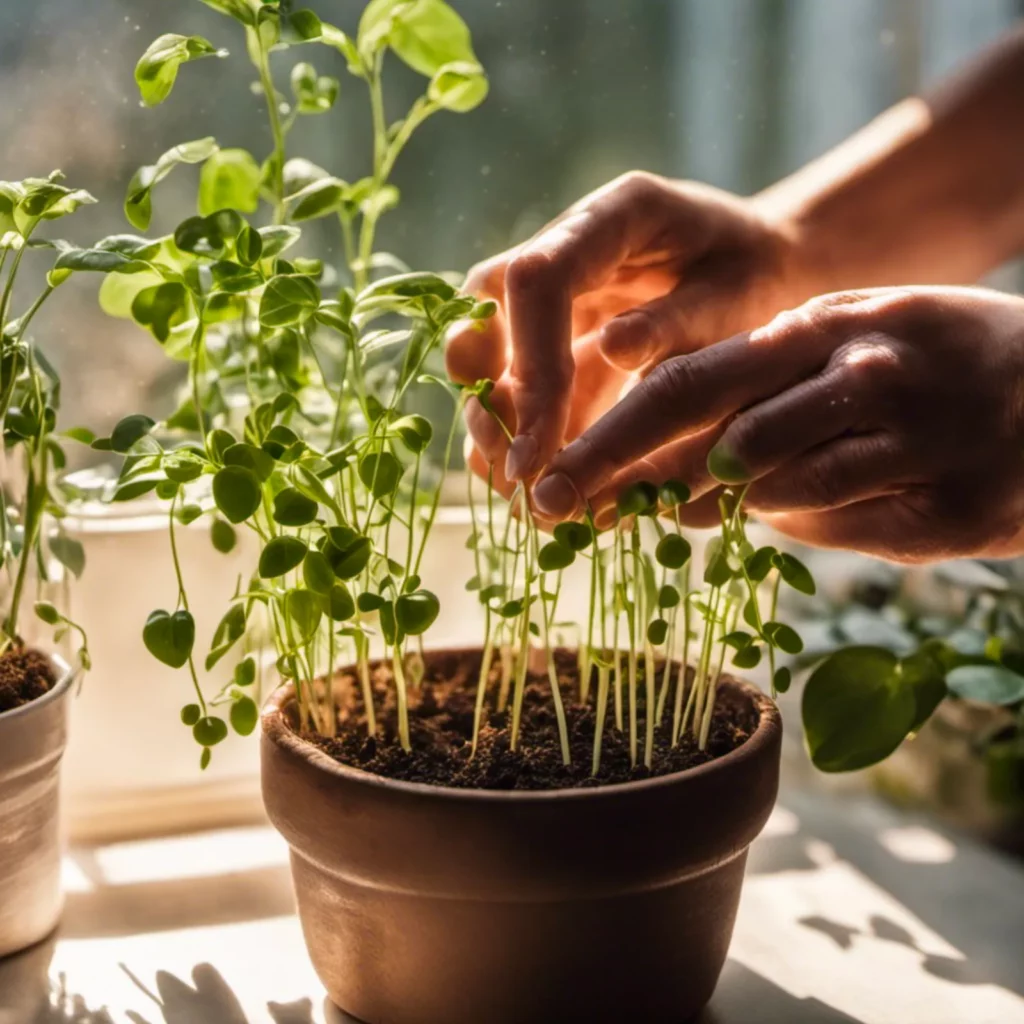
Propagation via Division Method
You can propagate Baby’s tears via stem tips cutting or division.
Remove our Baby’s tears from existing pot. Divide that with sharp knife. Make sure to include enough fibrous roots in each divided section.
Take each section and plant it in a new container having potting mix in it. Take care and love these Baby’s tears as mention above. They will reward you by growing out of container and décor your home.
If you observe that your plant is wilting in a new container then you can make a humid chamber. This you can do by wrapping plastic over the pot. This will help to maintain humidity.
Propagating via Stem Tips Cutting
Wash your hands and containers before starting the procedure. Cut the healthy stem below the leaf node from the mother plant. The stem should be least 5-7cm long.
Remove all the lower leaves and keep the topmost leaves. Dip this cutting in water. Then dip it in rooting hormone. Now keep this stem aside. We will prepare the container.
Put some potting mix in to the container. Now make holes in this mix. Place those prepared stems in these holes. Enclose this setting with a plastic bag.
Cover it such that there’s enough circulation of air. This setup maintains moisture around our propagated Baby’s tears via stem cutting. Watch over it.
The soil should be moist. Keep it for two weeks. By the end of around 2 weeks you should remove the plastic setting. Then after 3-5 weeks you will see roots emerging from stem. Yeah we did it!.
Potting and Repotting
If you notice that your Baby’s tears is wilting, overgrown then it’s time to repot it. It is best to repot it in spring.
Remove your Baby’s tears from the existing pot. Do not remove it by pulling. This will hurt their fragile stems. Instead turn the pot upside down.
Push your Baby’s tears from the drainage hole. Try to remove your plant as careful as possible. Keep this aside.
Take a wide container which is a bit larger than existing one and with enough drainage holes. The container can be a terracotta pot or a hanging basket.
Now put some potting mix in it. Make a hole to place our Baby’s tears root ball. Put some potting mix around the root-ball. Now subject this to adequate conditions. Let it grow.
Common Problems and Solutions
Issue: Baby’s tears plant attacked by scale, and aphids
Solution: The growth of scale and aphids are due to over-watering. In case of attack by Whiteflies you can use this same remedy.
Use neem oil Or hydrogen peroxide solution. Mix a teaspoon of hydrogen peroxide into 1 pint of water.
Spray this over Baby’s tears plant. Leave this for 10 min and then water it. Watch out your watering schedule. Please read this guide to know how much to water and how often to water.
Issue: Baby’s tears having white roots
Solution: Take a container and pour some water in it. You should soak your Baby’s tears plant in this container.
Issue: Baby’s tears have curl leaves and brown leaf-edges.
Solution: This is due to under watering and exposure to direct sunlight.
Issue: Leaves close to soil is turning yellow
Solution: This is because of over watering. Over watering leads to root rot. Over watering push air which is present or trap in the pot to move out of the potting mix. This reduces the amount of oxygen available for roots to stay healthy.
Issue: Brown leaf tips with yellow halos.
Solution: It is because of low humidity. Provide adequate humidity.
Issue: Botrytis and southern blight attack
Solution: This is due to high moisture content in soil. You should remove affected area and repot the plant in pest free sterile potting mix.
Issue: Wilting, sunken or yellowed leaves and stunted growth of your Baby’s tears
Solution: Dehydration is the issue. This can cause because of under-watering or exposing it to direct sunlight. Please provide appropriate light and watering as mention above.
Uses of Baby’s Tears
They are perfect for hanging baskets and pots, with their showy green appearance. These adorable plants can be hung from ceilings, or attached to walls with magnets.
The delicate, draping stems of our beautiful Baby’s Tears plants are adorned with tiny leaves, making them a lovely addition to any space. They can be used to decorate walls, tables, patios, or even as fillers in rock gardens. They make great ground cover and can even be used as living mulch under Banana trees.
Our Baby’s Tears plants are also comfortable in terrariums with other plants, such as the Starfish Flower Cactus. In fact, they have a cozy space in Vivariums as well, adding a natural touch to any set-up. It’s important not to completely submerge them in water though, as it may harm their roots.
Conclusion
Baby’s tears is a charming and low-maintenance houseplant that can be enjoyed by anyone. If you live in colder climates, it’s best to keep it indoors. However, if you live in warmer regions, it can also thrive as an outdoor plant.
It’s a great addition to any interior decor, as the delicate stems and small teardrop-shaped leaves add an artistic touch.
This guide will help you care for and appreciate the beauty of Baby’s tears.

